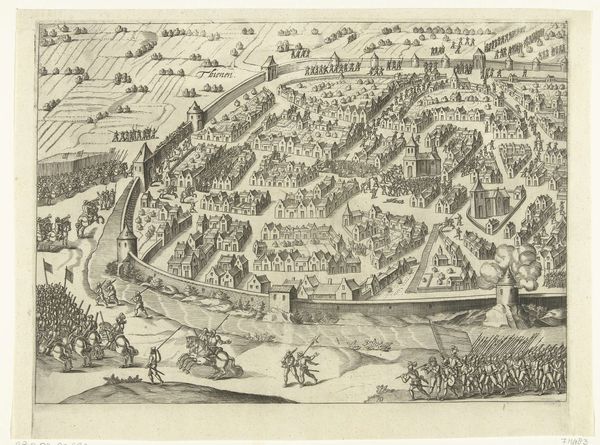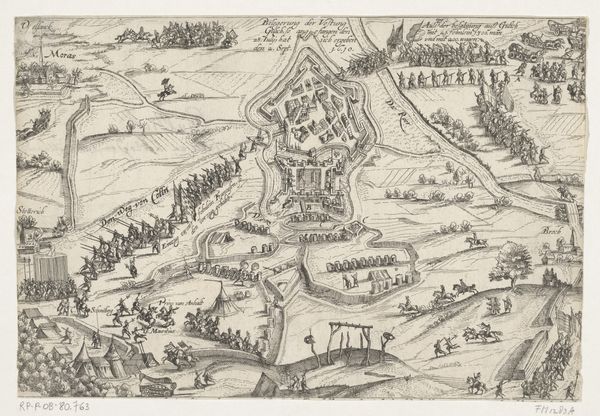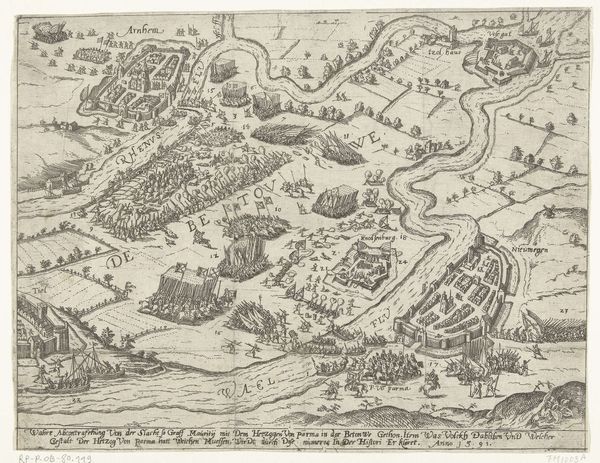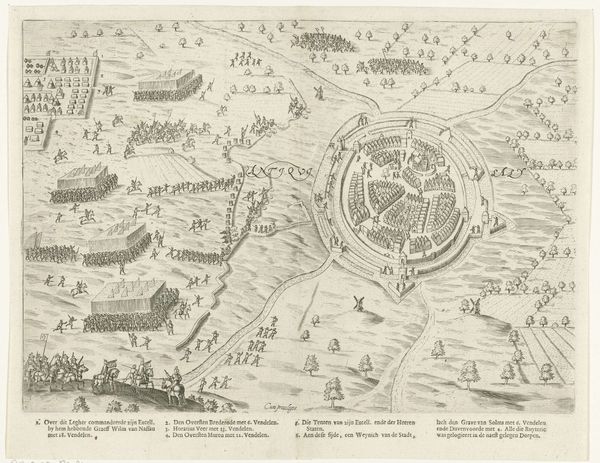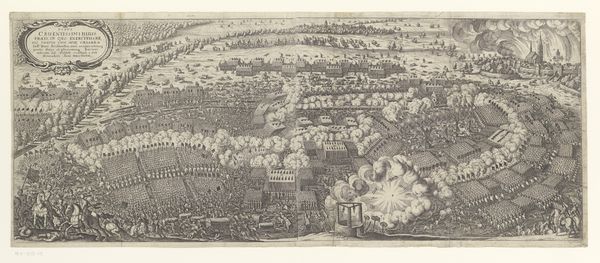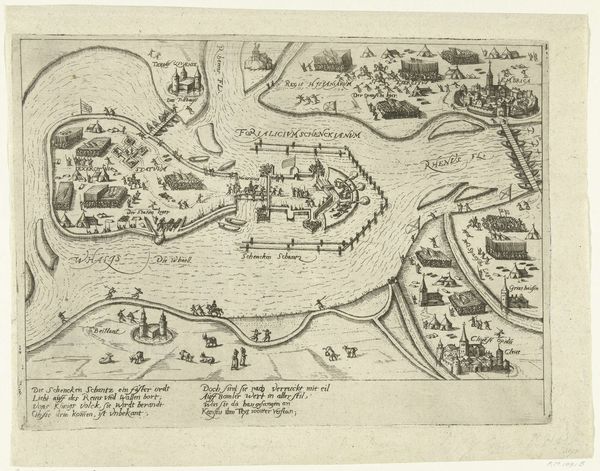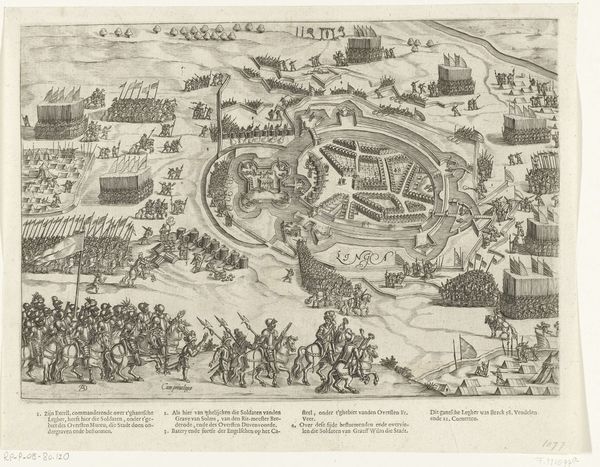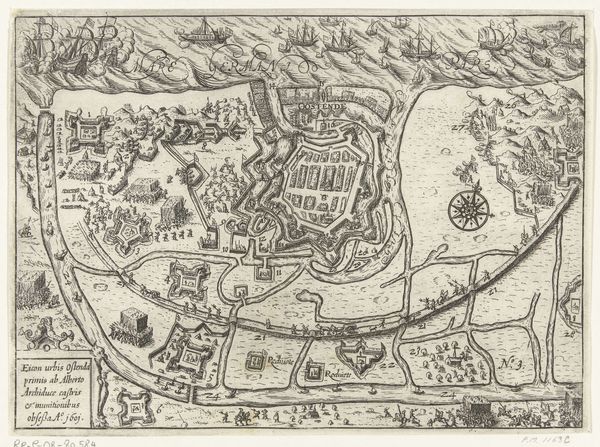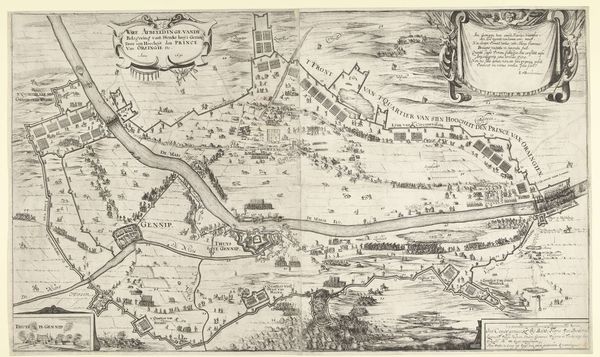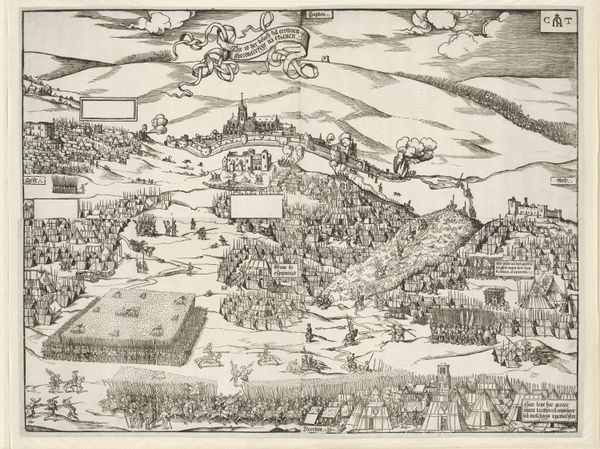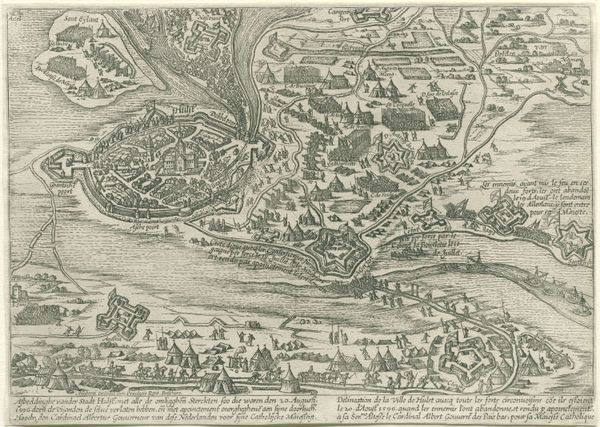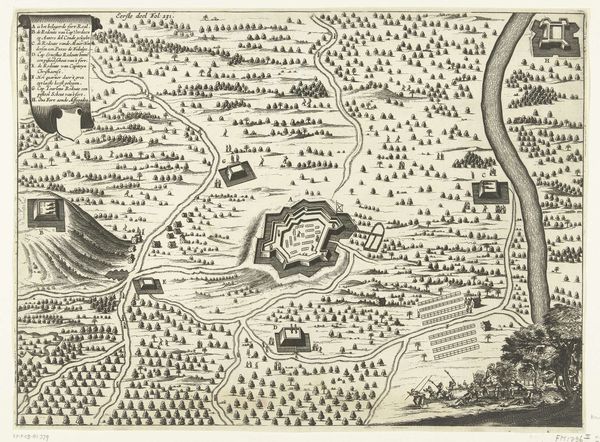
drawing, ink, engraving
#
drawing
#
pen drawing
#
landscape
#
ink
#
cityscape
#
history-painting
#
northern-renaissance
#
engraving
Dimensions: height 230 mm, width 310 mm
Copyright: Rijks Museum: Open Domain
Editor: We're looking at "Ontzet van Knodsenburg, 1591," a pen and ink drawing attributed to Bartholomeus Willemsz. Dolendo, created sometime between 1600 and 1651. It's incredibly detailed! It’s hard to wrap my head around all these figures, it’s as if it's a birds eye view on organized chaos, depicting some military encounter. What can you tell me about this piece? Curator: This drawing serves as a potent visual record deeply embedded within the political and religious turmoil of its time. Consider the Eighty Years' War, a struggle for Dutch independence from Spanish rule. Dolendo’s rendering of the siege isn’t merely a depiction of military tactics; it reflects a broader narrative of national identity, resistance, and liberation from oppression. How might the precise detail, the near obsessive accounting of troops and terrain, contribute to a certain construction of historical "truth"? Editor: It's like a meticulously planned battle map. The clarity with which he depicts the city fortifications and troop formations seems intended to legitimize and commemorate Dutch military prowess, pushing some agenda maybe. Curator: Precisely. Notice the geographical markers – cities labelled by their place. Think about this in terms of territorial claims and emerging national borders. How do you interpret the relationship between cartography and power within this historical context? Is the drawing a celebration of a military victory or the inscription of dominance? Moreover, this work enters into dialogue with artistic conventions of the Northern Renaissance while simultaneously engaging in the propaganda strategies of the time. It prompts us to question the ways in which historical narratives are constructed and disseminated through visual media. Editor: It makes you think about how images shape our understanding of conflicts and nationhood, even centuries later. I will definitely think about art through a new lens from now on! Curator: Indeed. It's crucial to remember art operates within complex socio-political landscapes, and by exploring its multiple layers, we gain deeper insight into the dynamics of power and representation.
Comments
No comments
Be the first to comment and join the conversation on the ultimate creative platform.
